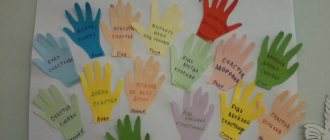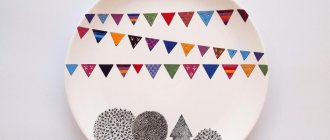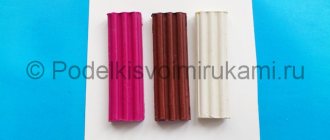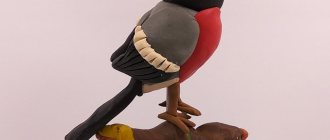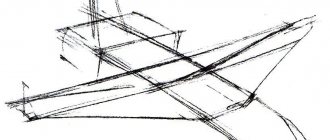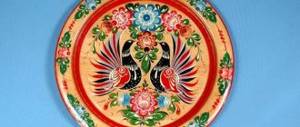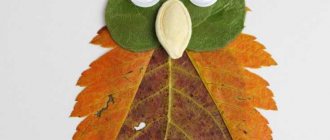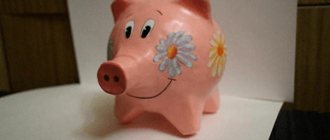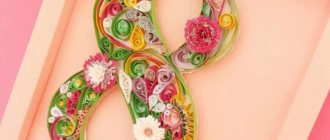Introduction
Bead embroidery has been known since ancient times. Since ancient times, Russian craftswomen have been admired for their magnificent embroidery skills, first with pearls, then in the mid-17th century with colored glass beads. Bugle beads were used to decorate clothes, and embroidered paintings depicting various landscapes, churches, icons, etc.
Nowadays, bead embroidery has become popular again. Beaded elements are used to decorate clothes, which gives them an original and elegant look. Many fashion styles are incomplete without beaded jewelry. Beads as a material have unlimited color possibilities, they are cheap and therefore accessible to everyone.
Modern needlewomen not only successfully decorate clothes, but also shoes, wallets, cases and handbags.
Embroidery of paintings with beads that depict flowers, birds and animals is extremely popular.
For many women, bead embroidery has become a favorite hobby. This type of creativity requires special skills, patience, dexterity and accuracy.
A great mood and developed imagination play a huge role.
Rationale for the topic: When completing the project, I decided to choose a painting of a small child because I had a younger brother.
I analyzed many options and methods for making paintings and settled on bead embroidery. I like this activity, especially since I have good experience. In the 5th grade I embroidered small paintings with beads, in the 6th grade - the painting “Titmouse” (see Appendix 1).
Purpose of the work: to make a beautiful painting “Little Brother” for the interior of my room, so that not only me, but also my friends and relatives will like it.
The goal requires the implementation of the following tasks:
- choose a picture of a small child for embroidery;
- buy a ready-made embroidery kit with a pattern;
- prepare the necessary materials and tools for work;
- follow safety rules when working with piercing, cutting tools and beads;
- during the work process, adhere to the technological sequence according to the instructions;
- complete the work and demonstrate it at the conference.
The practical significance of my project lies in the fact that the finished painting can not only become a decoration for my home, pleasing the eye to me and my family and friends, but it will also be a wonderful gift for any occasion.
Bead embroidery of the painting “Little Brother”
Beads (beads) are small decorative objects with a hole for stringing on thread, fishing line or wire.
The art of making jewelry from beads is called beading. Beads are also used in embroidery and mosaics.
There is a wide variety of types of beads: bugles, brocade, chameleon, poured, metallic, shiny, painted inside, grated, striped, rainbow, marble, with gold thread, etc.
In my work I used beads - glass beads, which are made from a tube of colored glass, of different sizes, colors, shapes (including twisted and faceted). The main size of a bugle bead is its length.
Most often, glass beads have sharp edges, although there are also glass beads with melted edges. In my work I used bugles - beads with melted edges.
It is safer, more reliable and beautiful.
To begin work, I need to prepare the following tools and materials:
- Fabric – canvas for embroidery with white beads with an image.
- Floss threads.
- Scissors.
- Beads of different colors.
- Thin needles for beads.
- Hoop. Bead embroidery, unlike cross stitch, is voluminous. Therefore, you need to select a hoop of large diameter; it is advisable that the entire design fits.
- Frame.
While performing work, I followed the following safety rules:
- The beads should be in a special container.
- The work should not slide on the table.
- Do not wave your arms while there is a needle in your hand.
- Do not put the needle or beads in your mouth.
- Keep out of the reach of small children and pets.
- Work in good lighting.
Sanitary and hygienic requirements:
- It is forbidden to bite the thread with your teeth.
- Be sure to wash your hands before starting work.
- It is recommended to take breaks from work at least every 1.5 hours, as your fingers get tired and your eyes get tired.
Presentation of the creative project “Bead embroidery”
Slide 1
Creative project “Bead embroidery” Completed by 6B grade student Belova Daria Municipal Educational Institution Nekouz Secondary School in the village of New Nekouz 2012
Slide 2
Plan Justification for choosing the project topic. History research. Scheme of thinking. Model selection. Selection of tools and materials. Routing. Economic justification. Ecological justification. Self-esteem.
Slide 3
Justification for choosing the project topic My grandfather’s birthday is coming soon. I decided to give him an embroidered picture. During technology lessons we learned how to cross stitch. But I decided to embroider a picture from beads. Thus, I will make a pleasant surprise for my grandfather and strengthen my skills.
Slide 4
History of bead embroidery Embroidery appeared in applied art back in ancient times, and during the Renaissance it became an indispensable element of decor. For a long time, Venice remained the absolute queen of bead craft, until it was supplanted by skilled Bohemian craftsmen in the 17th century. Venetian beads
Slide 5
History of bead embroidery In Russia, bead embroidery gained unprecedented popularity at the turn of the 18th and 19th centuries and remained a favorite pastime for girls in pre-revolutionary times. Tropinin. Embroiderer. Headdresses embroidered with pearls
Slide 6
History of bead embroidery Glassmaking and bead embroidery were popular in Russia in the Middle Ages Icon embroidered with beads Glass in a beaded case Set with sundress
Slide 7
Thinking diagram Bead embroidery History Model Materials Problem Economy Safety rules Tools
Slide 8
Choosing a model There are many options for bead embroidery.
Slide 9
Choosing a model I bought an embroidery kit at the store. It offered two beautiful paintings to choose from: 1. A small blue flower with golden specks, very similar to a cornflower. 2. Pink lily with carved leaves and multi-colored specks.
Slide 10
Model selection
Slide 11
Selection of tools and materials To perform bead embroidery you need fabric. I chose white canvas.
Slide 12
Selection of tools and materials The fabric should be stretched well and inserted into the hoop.
Slide 13
Selection of tools and materials The needle should be thin so that it can easily pass through the hole in the bead.
Slide 14
Selection of tools and materials Regular white threads are suitable for embroidery.
Slide 15
Selection of tools and materials Embroidery scissors are needed for cutting threads.
Slide 16
Selection of tools and materials For embroidery you need small beads of different colors.
Slide 17
Economic justification I bought a wonderful set for embroidery with beads, which cost 95 rubles. It included beads in 7 colors, canvas, a color chart for embroidery and threads. I value my work at 150 rubles. The total cost was 255 rubles. С=95+150=255 rub. Conclusion: Making it yourself is better than buying it in a store.
Slide 18
Environmental justification My product does not harm the environment, as it does not contain toxic or corrosive substances. I collected the scraps of fabric and thread and threw them into the trash. The process of making embroidery did not harm my health, because I followed the safety rules: When sewing by hand, the product is placed on the left, and the necessary tools on the right. The needle should be stored in a needle bed. Scissors should be placed on the table with the blades closed. The light should come from the left.
Slide 19
Self-esteem Everything worked out the way I planned. I really want to surprise and please my grandfather and I think that I will succeed. During the manufacturing process, my thread broke and half of the embroidery unraveled, but thanks to my persistence I fixed everything.
Slide 20
Informational resources. https:// salonbisera.ru / istoriya.html - history of beads https:// biser.info / node / - Venetian beads https:// cherry-lady.ru / istoriya-bisera - beads https://pleteniebiserom.ru/ 2011/08/osnovy-pleteniya-biserom-materialy-i-instrumenty/ https://delai-sam.com/post.aspx?nod=77&id=2842 – canvas https://biserinka.in.ua/instrumenty-dlya -vyshivki-lentami/- scissors https://www.kartiny-biserom.com/index.php - bead technique https://www.lalena.ru/catalog/items/11926/ - pansy beads https://www .ru.all.biz/g442638/ - fish https://www.dettvorchestvo.ru/index.php?productID=3673 - apple https://mirkresti.com/64/vyshivka-krestikom-sxema-buket-lilij/
Bead embroidery technology
Let us consider in detail the technology of embroidering the picture with beads “Little Brother”. What needs to be done to produce a painting of the highest quality?
Having prepared all the tools and materials, observing safety rules when working, I began to embroider using the following manufacturing technology:
- Place the fabric on the work surface.
- Carefully insert the canvas into the hoop and secure it.
- Determine the center of the canvas; there is an arrow on the diagram.
- Thread the needle.
- Thread the thread and needle into the fabric.
- Choose the color of the beads according to the picture.
- Place a bead on the thread.
- Thread the thread with beads and needle into the fabric.
- Embroidering is done in horizontal or vertical rows, bead by bead.
- Each bead is fixed in its own cell of the canvas.
- The thread is secured with two or three small stitches.
- With each new thread, the first and last beads are secured with a double stitch;
- The beads are sewn onto the canvas with oblique stitches using a half-cross stitch in accordance with the pattern.
- Repeat steps 4–8 in a certain quantity in accordance with the picture.
- The finished embroidery is placed on cardboard, the rest of the fabric is folded to the wrong side and either glued or stitched.
- The embroidery stretched onto cardboard is inserted into a frame that matches the painting.
Pictures embroidered with beads must meet certain requirements. Let's consider the issues of economic and environmental feasibility of making a picture from beads.
Go to section: Economic and environmental justification for the painting
Step-by-step guide to bead embroidery
Now you are ready to get started. Follow our recommendations and excellent results will not keep you waiting. Here's what you need for this:
Preparation
Before you start working, you need to choose a pattern or ornament that you will embroider, and also prepare everything you need for this (the necessary beads and all the materials for the work). Once you have found the beads, the desired pattern and its pattern, cut off as much canvas as you need and sort the beads according to the colors required.
For a beginner, as in the case of cross stitch, ready-made kits with diagrams and all the necessary materials are best suited.
Processing the edges of the canvas
To ensure that the edges of the canvas do not crumble and look neat, it must be processed. There are several ways to process canvas. Some needlewomen prefer to finish the edges of the fabric manually using an overcast stitch. But there is a simpler and faster method - processing the edge of the canvas using PVA glue, an adhesive stick or transparent nail polish.
To avoid pulling the fabric, we use a hoop
They come in plastic and wood. If you want to buy a wooden hoop, make sure that the wood is properly processed. Any minor roughness and surface deformation can lead to damage to the fabric and possibly the embroidery itself. For larger projects, it is better to buy rectangular tapestry hoops.
Video: preparing a workplace and accessories for bead embroidery:
Choosing a bead embroidery technique:
Embroidery with horizontal stitches , also called "monastery stitch". It is used for embroidering paintings, icons, small images on handkerchiefs and clothes. It will not be difficult to implement even for beginners: you should start from the upper left corner, where you thread a thread and a needle, then string a bead and secure it, “sending” the needle to the lower left corner. Do the next stitch in exactly the same way. If you implement this technique correctly, all your stitches will be placed diagonally. The monastic stitch is similar in principle to the half-cross embroidery technique, with the only difference being that you also use beads.
In case you need to skip a row or go to an adjacent one, pass the thread through the upper right corner of the right side and then go to the opposite corner at the bottom of that square.
Monastic stitch embroidery
The monastery stitch is the best way to start learning to embroider with beads.
Video: how to embroider with beads (monastery stitch):
Line stitch: secure the bead horizontally. You need to thread the needle and thread in the middle of the “cage” on the right, then fasten the bead and “send” it to the left. This technique is an exact copy of the “back needle” variation, which we know from labor lessons. Using this stitch, you can determine the distance between the beads yourself.
Embroidery with a lower stitch (back stitch)
If the beads are not well secured to the fabric, simply create another line using a backstitch.
Stem seam: it is used to securely fix the beads to the canvas. This type of technique is implemented on the same principle as the line stitch, but with minimal differences. The needle is threaded from the left, a bead is threaded, then the needle is threaded through the opposite corner. After this, return the needle to its original position and thread the thread through the eye of the bead again.
Embroidery with stem stitch
With this stitch you will achieve a denser pattern, since the punctures are made as close as possible to the previous bead.

